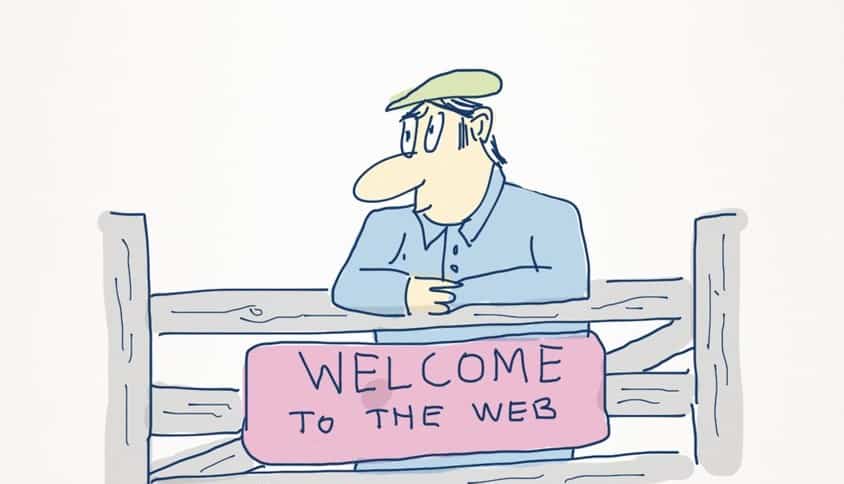Matt and I have just returned from Web Directions South 2012, the eighth year of the conference. For us it’s the one big event of the year for all things web, and is not to be missed. This year I found my interest mainly captured by the ‘big picture’ track and the new ‘startup’ track, although as usual found myself wishing I could be at two or more talks at once.
Unlike most conferences, rather than calling for papers and speakers Web Directions has an editorial approach — organisers John and Maxine put together programs based on current trends in the industry, and seek out speakers who are working in those areas to give inspiring, entertaining and practical presentations.
This year had some hard questions about where we direct our energies as designers and problem-solvers, with many high-powered minds suggesting that something far beyond simple commercial gains is where we should be looking. As gatekeepers to a digital renaissance we have the responsibility to grease the rails and guide the world towards its potential.
Ten takeaways that had a particular impact on me this year were:
- Cameron Adams’ opening titles are always an inspiring way to begin the conference – showing the capabilities of the technologies to be discussed gets things off to an impressive start! A behind-the-scenes view has been posted on YouTube.
- Josh Clark’s opening keynote “Beyond mobile: where no geek has gone before” (sketchnotes) reminded me that UX design must encompass more than just the visuals – touch and other senses play a part in interaction and understanding too – we do have 10-16 other sensory capacities that help us experience the world. Also check out our interview with Josh about designing ‘tapworthy’ apps.
- Mark Boulton’s talk on “Adapting to responsive design” (read more) explained how the move to adaptive websites implies so much more than just making a ‘stretchy’ site – an honest embrace of this approach should work back into content needs and content management, workflow and project management, and beyond. We should releasing our grip on control and work in a way that is flexible. In essence, adopting responsive web design practices needs to begin in the the boardroom, rather than being left until the developer’s desk.
- Sara Wachter-Boettcher spoke on “Content strategy for the future” (sketchnotes) and noted the potential for content to be re-used (Create Once Publish Everywhere) if we respect it as more than one big text blockand start giving it shape and form – which she explained as WYSIWYG or WYSIWTF?Most of us will have experienced that abandoning clients to their own content can potentially be disastrous. Working with them, and resisting the urge to simply ‘sell’ them a solution will allow us to invest more deeply in the process. We can aim to do less, facilitate more and ‘teach them to fish’. Tying the ‘content’ roles to the business goals & vision will also empower them to more gracefully adjust with change.
- Ben Hammersley (and his moustache) stepped off a long-haul flight from London and straight into presenting an enthralling 60 minute presentation “The Flower, The Field and The Stack” (sketchnotes) for the day one closing keynote – without any slides. After congraulating us for being a population of cyborgs unable to divorce ourselves from our smartphones, he urged us that now is the best possible time to change the world. As the first generation to live with a mindset affected by Moore’s Law and with an enormous, expressive toolkit of fun stuff, we have a duty to be a cultural translator for governments, policy-makers and old-people who make decisions.
- Tom Coates’ opening keynote for day two “An animating spark” (sketchnotes) made the mundane facinating. Mundane computing – computing experiences for people’s day-to-day lives – doesn’t have to be extreme. The Minority Report-style interfaces of the movies and fridges with built in computers aren’t helping this – the way we think about our future is betraying our future. It doesn’t matter if the benefit is minor as long as the cost is less. We need to design things with taste, simplicity and clarity.
- Avis Mulhall’s down-to-earth testimonial in “Passion and Purpose” (sketchnotes) was a vulnerable but real-life departure from the design, business and tech-focussed lineup. It was the kind of confronting reset I think we all need from time to time to make sure we don’t forget the important things, and this was valuable in itself – but Avis also provided valuable insights from her experiences with social entrepreneurship, including a reminder that the existing not-for-profit model is broken, and a suggestion that there’s no need to separate doing good from making money. In practice, using a social enterprise model may well have greater potential for impact on world issues. See more at thinkactchange.org
- Heather Champ’s “How to grow and sustain a passionate community” (sketchnotes) shared some best practices from her time at Flickr. The thing that really rang strongly from her examples was that the choices you make early in your new site’s life will effect the kind of community you grow for years to come.
- Josh Clark’s second talk “Buttons are a Hack” (sketchnotes) was an unexpected bonus. It’s not a new talk, but many of us were hearing it for the first time. In it, Josh mentioned that buttons are weak replacements for manipulating content directly and that gestures are the keyboard shortcuts of touch.
- Jon Kolko’s “Means to an End” (sketchnotes) brought us back to old-skool design – where craftsmanship was about quality, designing with rigour and not necessarily speed. Jon explained that when we have a mastery of digital messages it can amplify our reach. He then challenged us all about where we’ve chosen to direct this power. If design itself has no subject matter, selecting a subject and solving its problem will have political consequences, and we should use this responsibility carefully.
But as important as the content of the talks is, Web Directions is also about connecting with peers — catching up with old friends and making some new ones, sharing know-how and expertise, or finding an expert. Web Directions South had some great social events on in the evenings where it was good to down some beverages and up some conversations. Matt and I had a great time, and hope to see you there next year!
Take a look at the Web Directions blog and resources site to see slides and hear podcasts from previous events, and don’t forget to check out Matt’s brilliant sketchnotes.





